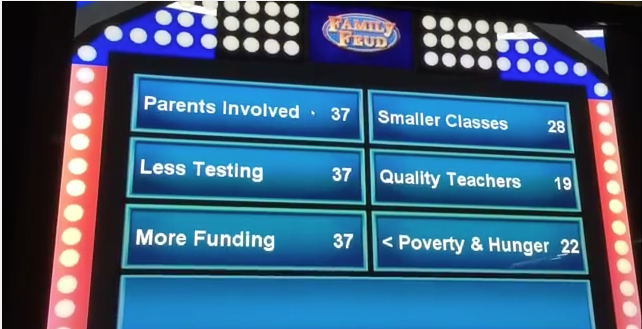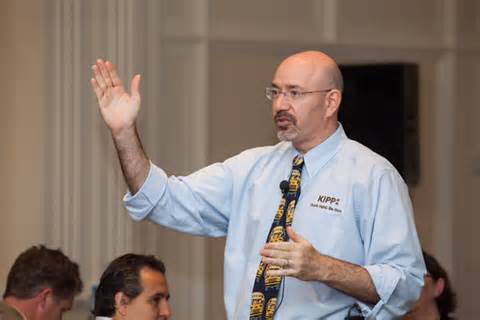Is a total neoliberal misrepresentation coming to K12 Education in a public district near you?
A recent article in the pro-charter, pro-neoliberal “magazine,” called Education Next, is a thorough misrepresentation of the recent history of Indianapolis K12 education (see the article at https://www.educationnext.org/hoosier-way-good-choices-for-all-indianapolis/). I know because, as a university professor and a community activist, I have spent the last seven years working against the pro-charter, pro-neoliberal efforts in Indianapolis, mainly through the IPS Community Coalition, a citywide grassroots organization, and through an activist research group of doctoral students, community members, and university faculty. Below, I am going to point out ten ways this Education Next “story” is distorted and deceptive.
- The real cause of the “schooling crisis” in Indianapolis was racism and desegregation as many whites who could afford to do so moved out of the city, as did much business and capital, along with the ongoing effects of local, long-term racist policies and practices.
In the Education Next (EN) article, there is not a single reference to race, desegregation, and racism. Indeed, these words are never used (except as labels in one chart) even though the history of Indianapolis schooling cannot be accurately and fairly storied without these. In addition, there is no mention of the ongoing racism in law enforcement and imprisonment, housing, education, medicine, employment, banking, and the media, which exists in all cities and is well documented in social science research. These exclusions are a loud absence that is unquestionably remarkable and certainly a mark of weak and/or distorted scholarship. Why would anyone who wanted to tell an honest “Hoosier” education story leave these out? At a minimum, it certainly makes one wonder about the real nature and agenda of this EN story.
- No mention of the pro-charter neoliberal movement that has “Mind Trust” and “Stand for Children” like organizations in every major city and several smaller ones in the U.S.
The Mind Trust and Stand for Children in Indianapolis like to keep their “story” local so those who work for them and the Indianapolis public remain ignorant about their true nature. The Mind Trust and Stand for Children never discuss that they are part of a national neoliberal movement largely funded by conservative and right-wing individuals, organizations, and corporations. They never discuss the wider agenda of this movement, which includes low taxes for the wealthy, decreased funding for social supports, the privatization of and profiteering off of public services (like public education), efforts to decrease the voting power of people of color, the end of unions (esp. teachers unions) and the benefits unions have developed, among other ways that decrease the quality of life for everyone but the 1% and those who serve them. Also, Mind Trust and Stand for Children never discuss the strongly anti-democratic nature of the neoliberal movement. To begin to educate yourself on this national movement, read these highly respected books, in this order, MacLean’s Democracy in Chains, Mayer’s Dark Money, and Lipman’s The New Political Economy of Urban Education.
- No mention of the key role of ALEC (American Legislative Exchange Council) in the Mind Trust/Stand for Children story.
ALEC is a conservative-rightwing organization that creates model state-level neoliberal legislation to assist in institutionalizing the state-level neoliberal agenda discussed above in #2. ALEC considers Indiana to be one of its favorite states, as Indiana Republicans and some Democrats have implemented so much ALEC developed legislation. The result has been that Indiana consistently ranks high in business-friendly policies and effects and among the lowest in quality of life policies and effects. Lengthy discussions and critiques of ALEC and its agenda are widely available, but there is no doubt ALEC is pushing a radical agenda that would not be supported if voted on by the general public.
- No mention of the “dark money” funding of Mind Trust/Stand for Children supported school board members.
Since the 2012 board election in Indianapolis, the Mind Trust and Stand for Children have covertly used a Stand for Children 501c4 headquartered in Oregon to funnel national money into the Indianapolis school board race. Before this, any everyday citizen who could put together funding of $3-5,000 to win election to the school board. Starting in 2012, we know that the Mind Trust and Stand for Children started providing around $65,000 to each of their chosen candidates with all of them winning as no one was expecting or prepared for this infusion of such large amounts. In the next election, 2014, they did the same and took majority control of the board, even though one of their chosen candidates, Gayle Cosby, turned against them once she realized what their real agenda was. We call this “dark money” because a 501c4 does not have to report where the funds came from or how they were spent and not one of their candidates have publicly admitted this support. In fact, it took the IPS Community Coalition shouting loudly about this for some time before the local news media paid any attention and still do not sufficiently attend to this, especially since in the last election, our best guess is that they spent over $500,000 on a district wide seat (more on this below). Recently, the head of Stand for Children, who is widely praised in the EN article, said on social media that the Indianapolis Stand for Children has no relationship to the 501c4 in Oregon, leaving us puzzled as to how the Oregon folks know whom to support.
- Even though the “Innovation” schools (stealth charters inside the district) are widely praised, there is no discussion of constant reports to the IPS Community Coalition that the district leadership uses deception, misrepresentations (to put it politely), and threats to stop resistance and garner parent and teacher support for converting a traditional school to an “innovation” school.
Either lots of teachers and parents are lying to the IPS Community Coalition, or the districts is using strong arm tactics to institute “innovation” schools. Indeed, many teachers report to us that they feel afraid of the district leadership, given the district’s rough shod ways of getting what the district wants. Also, there is no mention of the fact that for their first three years, the “innovation” schools are under easier state accountability rules. Thus, the Mind Trust and Stand for Children often brag that the “innovation” schools are doing “better” even though traditional schools, which are under the full accountability rules, are actually doing better. Might we call this dissembling?
- No mention of the utter failure to successfully educate Black children, who are the majority of IPS students, and no mention of the use of home schooling and high discipline rates to push out Black children.
Despite that we know that testing experts say we cannot use state accountability exams in the way we do, it is a harsh fact that less than 6% of Black 10th graders recently passed both the state’s language arts exam and the math exam. If any business (the favorite neoliberal model) had this terrible outcome, that business would be shut down or all the leadership fired. This is totally appalling—and never mentioned. In addition, an intrepid local Chalkbeat reporter found compelling evidence that some schools have been counseling the parents of primarily Black students to choose to home school instead of facing a discipline incident result, a move that takes this student off the school’s roles and improves the school’s standing. That this has the high potential to negatively impact the entire life of these Black students does not seem important to the decision makers, even though local Black activists, like Diane Daniels, have been pointing this out for years. Furthermore, other schools, sometime called “no excuses” schools, use really high levels of discipline to push out primarily Black students that they see as potentially hurting their schools’ state grade, even though local education activists, like John Harris Loflin, have been making this point for years. That all of this is totally disastrous for Black students, their families, their communities, and all of Indianapolis does not seem important enough to mention in the EN story.
- Substantial problems with the CREDO and Indiana University (IU) research cited in the EN article and not addressed.
There is no mention of the deep critique of the CREDO report and its methodology, even though the University of Colorado’s National Education Policy Center (neps.colorado.edu) has published more than one critique of the CREDO methodology and their reports. Also, no mention that the CREDO reports are done by a center that receives large pro-charter funding. Furthermore, the IU research has been cited locally and nationally but never publicly released, as far as I have been able to determine. I was able to get a copy of it, but since others have ownership, I cannot release it. I did a thorough, indepth critique of it, showing it to be flawed in multiple ways but cannot publish since the research continues not to be public. I mentioned that publicizing but not publishing results was against social science practice and ethics. I even asked that it be released, but they have stopped communicating with me even though I am part of the same university system.
- Nothing on the persistent incompetency of the Ferebee administration. (Ferebee left last year to go to Washington, DC. Fight hard, everyday DC folks!)
The examples of incompetency are many and large. First, closing of high schools is almost always a fraught endeavor. Nonetheless, there are good superintendents around the country who have figured out how to have authentic, transparent conversations with their communities and arrive at collaborative decisions. I have met and talked to some of these folks. It is never easy, and some community people are not happy in the end, but overall the community can feel it was done fairly and transparently. That was not the case in Indianapolis. Second, without consulting even with their friends and natural allies, like the Chamber of Commerce and the Board of Realtors, Ferebee went public with little time left before the vote with a nearly one billion-dollar bond proposal. Even their friends and allies said, “NO!” After an inappropriate Chamber study of cost cutting for the district, the district cut to around a quarter of the original amount to get Chamber and other elite support. In addition, good superintendents know that it takes one to one and a half years of hard work to prepare for a successful bond election, and even that is no guarantee. Ferebee seemed not to know this. He did though get his quarter million because he committed most of it to raising teacher salaries, which even his critics supported. Third, the district’s public budget document was opaque and confusing, even after having been critiqued by a non-political national organization that examines such documents nationwide. After two years of pushing, we got some improvements. Fourth, busing has consistently been a mess, which they now think they are solving by privatizing it. Fifth, teachers districtwide have become very afraid of raising any issues because they believe they will be fired. Sixth, even though there is a large amount of research nationally as to what it takes to create successful urban schools for all children, regardless of race and ethnicity, family income, sexuality, disability status, and immigration status (some of which I have published), the Ferebee administration did not seem to know any of this. Instead, initiating “innovation” schools and supporting charter schools that replaced district schools seemed to be his only choices.
- Chaos is the nature of the educational landscape as charters open and close and as neo-liberal-controlled IPS school board closes and opens schools and supports charters that open and close.
Since charters became legal in Indiana, 2001, 44% of charters have closed or been converted to a different school. If we just count charters that closed, it is 40%. This creates a very chaotic k12 educational landscape for students and their families. After a family picks a charter, the odds are nearly half that the charter will close sooner or later. Not surprisingly, many Indianapolis parents, especially low-income Black parents, are having to regularly move to a different school within their children’s elementary years. What kind of a school system has nearly half of its schools closing over the last 20 years? It is almost like the schools are more like hamburger joints than dependable public educational spaces.
- Choice does not really exist working class and low-income families
Choice is a deceptive charade in Indianapolis public education, despite the school lottery, which includes both traditional and charters, run by “Enroll Indy” and originally funded by the Mind Trust. If you are a low income family of color, your real “choice” is to attend one among several low scoring schools dominated by the children of other low income families of color or “no excuses” schools that have very high discipline rates so that they can readily remove any student who will not help their state assessment grade. The so-called “good” schools are overwhelmingly the ones with majority or near majority white students from educated, upper middle-class families. These schools were created and are still being created to serve white families so they will move to Indianapolis or move their children to Indianapolis school district. Though this is certainly a form of racism, some white school board members have publicly admitted this and/or recommended to their white friends to not send their children to the “diverse” schools. However, these “good” schools are not readily accessible to the low-income families of color or even middle-class families of color. This is not to say that there are not any “improving” schools or moderately successful schools serving low income families, but there are only a few. Enroll Indy claims to be the district’s response to this racial segregation even though racial segregation in the district is increasing (nationwide research indicates that an increase in charters leads to an increase in racial segregation). Importantly, the public cannot get access to Enroll Indy’s algorithm or their data set as they claim to be a private company, though their office is in the district administration’s building. Thus, they are able to conceal their process and their outcomes from the public
The neoliberal, so-called education “reform” movement is weaker than they seem despite their millions of dollars and their PR machine.
The IPS Community Coalition is a multi-race, multi-class citywide coalition of everyday Indianapolis folks and local organizations (see us on Facebook) who started a little over three years ago. We began with less than eight people sitting in a room together, and now we have over 250 members. We are very active on Facebook and sometimes have over 6,000 eyes on our posts. We have no money, and many of our members have little. We do support teachers’ unions and work with the local teachers’ union. In the 2018 school board election, we defeated two of the Mind Trust and Stand for Children incumbents. The only race they won was due to the candidate being a non-incumbent. In our best understanding, they spent over a half million dollars on their districtwide candidate, Mary Ann Sullivan, while the person we supported, Susan Collins, defeated their candidate on less than $10,000. Because of their losses in the last election, now they are bringing back some of the most well-known local founders of their so-called education “reform” movement, and they are trying to fake the community engagement that we authentically do. They do have millions of dollars, many fulltime and part-time employees, and a large PR machine that falsely uses civil rights language, but they can be defeated.
Study what neoliberalism is doing in education and other public areas of your community.
An activated people can defeat money and power.
Dr. Jim Scheurich, Urban Education Studies Doctoral Program
Indiana University – Indianapolis (IUPUI) Professor
President, IPS Community Coalition
(This was previously published on Diane Ravitch’s blog, but points #9 and #10 have been added. )






You must be logged in to post a comment.